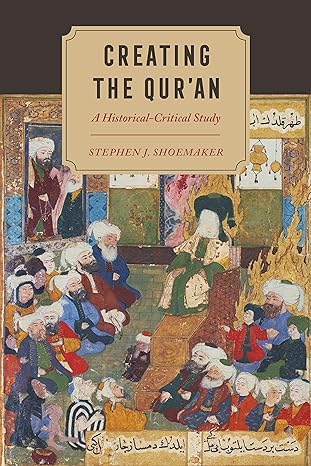
Creating the Qur’an: A historical critical study
Stephen J. Showmaker
Oakland: University of California Press. 2022. 353 pp. $34.95, paper.
This review appeared in the Middle East Quarterly Volume 30(4).
review by Mark Durie
In Creating the Qur’an, Shoemaker, professor of religious studies and Christian studies at the University of Oregon, offers a closely argued account of how the Qur’an came into existence. It is a tour de force.
Railing against the “shackling” of many contemporary scholars to the traditional Islamic origin story of the Qur’an and drawing new insights from a wide variety of disciplines, including religious studies, linguistics, and anthropology, Shoemaker concludes that the text of the Qur’an only became fixed during the rule of Abd al-Malik some seventy years after the death of Muhammad. “The Qur’an,” he concludes, “was in many respects non-existent before the end of the seventh century.”
Rejecting the commonly held view that the Qur’an’s text was standardized much earlier, by order of Caliph Uthman, Shoemaker concludes, based on Islam’s “chaotic tangle of inconsistent traditions,” that this account is not credible.
Shoemaker reviews the conditions at Mecca and Medina in the early seventh century and posits that these small, out-of-the-way settlements were “simply not capable of producing or even comprehending such a rich and sophisticated collection of late ancient religious traditions.” Furthermore, he draws on findings from literacy and orality studies to conclude that Mecca and Medina did not have the literacy required to fix the Qur’an’s text. It is, he argues, a myth that people in pre-literate societies can commit long oral texts to memory without changing them.
Shoemaker’s preferred explanation for the origin of the Qur’an is that remembrances of Muhammad’s original teachings, first delivered in Mecca and Medina, were passed on orally over more than half a century by his followers. Along the way, they were inevitably altered by normal processes of oral performance and recomposition. It was in regions far from Mecca and Medina that these oral traditions absorbed their many references to late antique religious traditions, before being fixed in written form under Abd al-Malik. (A tantalizing alternative scenario, dismissed by Shoemaker as “too radical,” but entertained by some revisionist scholars, is that the original Qur’anic community was located nowhere near Mecca or Medina.) Shoemaker’s firm conclusion is that the Qur’an is “a fundamentally composite and composed text,” a much-altered remnant of Muhammad’s original preaching.
Creating the Qur’an is the most comprehensive critical historical account of the Qur’an’s origin to date. It is a milestone in a decades-long struggle to bring the Qur’an out from behind the veil of Islamic orthodoxy into the full light of contemporary scholarship.
- Like
- Digg
- Tumblr
- VKontakte
- Buffer
- Love This
- Odnoklassniki
- Meneame
- Blogger
- Amazon
- Yahoo Mail
- Gmail
- AOL
- Newsvine
- HackerNews
- Evernote
- MySpace
- Mail.ru
- Viadeo
- Line
- Comments
- SMS
- Viber
- Telegram
- Subscribe
- Facebook Messenger
- Kakao
- LiveJournal
- Yammer
- Edgar
- Fintel
- Mix
- Instapaper
- Copy Link








3 Responses
Interesting.
Is there evidence that essential Koran/Hadith teachings were NOT accurately transmitted orally ?
How did Jews and Christians in Arabia manage to transmit the Old and New Testament texts, 500+ years before Mohammad such that the Koran refers to them?
The societies that composed and set the canon of biblical scripture were literate. The New Testament contains writings, including epistles. The Gospel of Luke’s introduction explains itself as a written account to Theophilus from Luke, the writer. Starting with a written account should be a more reliable foundation for accurate transmission of the text.